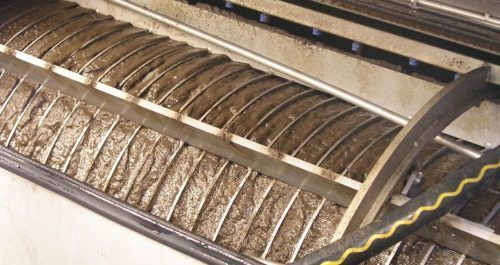Discover Wastewater Genomic Mapping: Decoding the Best Microbes to Use
Published on by Water Network Research, Official research team of The Water Network in Technology
Learn about the fascinating method of wastewater genomic mapping that allows waste managers to pick the precise microbes for treating microorganisms.

Image Source: ATS Innova Clean Water Solutions
All living organisms contain DNA – including living ecosystems and living wastewater treatment. The scientific research project, known as the Human Genome Project started in 1990 and took more than a decade to complete and $2.7 billion. The goal included identifying and mapping all the genes of the human genome, both physically and at a functional level. What an amazing discovery and one that is now being done in wastewater treatment.
The Problem with Feeding Just Any Bug
Treating wastewater can be a challenging task with breaking down sewage, reducing FOG, eliminating hydrogen sulfide, and more. The most popular wastewater treatment uses “bug farming”, however, bugs are finicky and won’t eat just anything. Throwing bugs into wastewater and expecting them to do their job isn’t always a simple and easy process. Raw sewage contains billions of bacteria and come from many different sources. It takes time, trial and error, and resources required to get the job done right. It also requires knowledge of the bacteria, which can be a daunting task, since if you can’t identify the bacteria, then the consequence of bulking and foaming occurs, which affects 30% of the world’s activated sludge in wastewater treatment facilities.
Bulking happens when sludge doesn’t settle after air pushes through the wastewater. It eventually lowers effluent quality and increases costs. Throwing bugs into a wastewater treatment system costs money, and lots of it, depending on the product and dosage. This sometimes sets up recurring costs that result in the same outcomes. If those outcomes aren’t producing satisfactory results, then you’re wasting time – and money.
The Key to Wastewater Genomic Mapping Using DNA
Microbiologist Per Halkjaer Nielsen, the head of the Center for Microbial Communities in Denmark, made a remarkable discovery using the tools from human genome mapping. He began applying and developing further technology to identify the bacteria in wastewater treatment plants. At ATS Innova, we adopted the method and found that mapping the DNA of wastewater microbes by identifying microorganisms and understanding their function, resulted in developing high-quality specialty microbes (bioaugmentation) containing synergistically-developed blends. This balance allowed us to enhance the microbial community’s ability to degrade organic material in wastewater.
This is why bioaugmentation blends used for wastewater treatment should include:
- Increased floc formation and settling characteristics
- Decreased BOD/COD levels
- Reduced odor generation from hydrogen sulfite, volatile fatty acids, ammonia, and more
- Reduced sludge yields
- Decreased reliance on dewatering polymers, flocculants, and other high-cost chemistry
- Solids buildup and FOD reduction
- Improved digestion and dewatering process
- Reduced lift station and sludge tank corrosion
Read more about this topic on ATS Innova Clean Water Solutions
Media
Taxonomy
- Bacteria
- Anaerobic Digestion
- Sewage Treatment
- Wastewater Phycoremediation
- Industrial Wastewater Treatment
- Cooling Boiler & Wastewater
- Bioaugmentation
- Wastewater Treatment
- Wastewater Collection
- Microbiology
- Sewer Networks
- Genomics